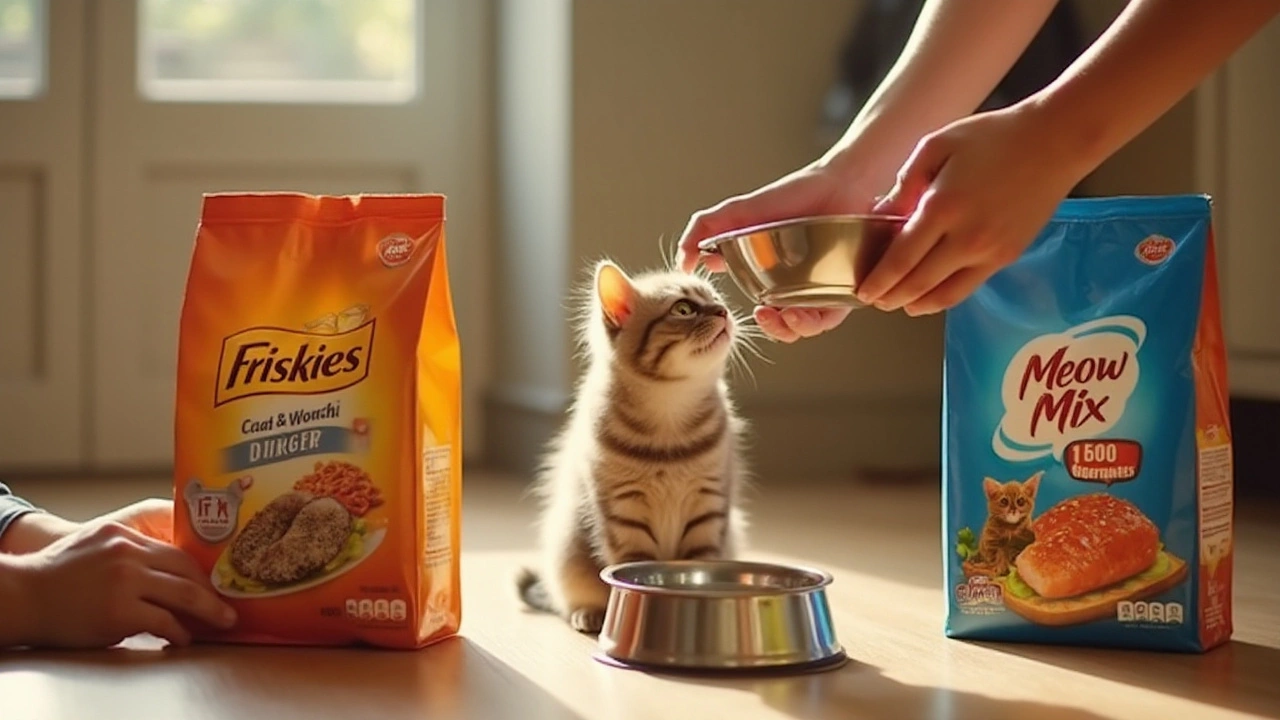Cat Food Comparison: How to Choose What Keeps Your Cat Thriving
Did you know a kitten can gain two pounds in just a month if the food is off? That jump sounds small, but it can stress the heart, joints, and kidneys. The good news? Picking the right food is easier than you think once you know what to look for.
Dry vs Wet Cat Food: What’s the Real Difference?
Dry kibble is cheap, stores well, and helps keep teeth clean, but it’s mostly carbs. Cats are obligate carnivores, so they need protein and moisture. Wet food gives a big water boost and usually has more meat, which means better taste and easier digestion. If you mix both, you get the low‑cost convenience of dry and the hydration of wet.
When you compare labels, check the protein % first. Aim for at least 30 % for dry and 8‑10 % for wet. Look at the source: “chicken meal” is different from “chicken broth.” Whole meat is best, while by‑products can be hit‑or‑miss. Also, note the calorie count – dry foods pack more calories per cup, so you’ll need less than you think.
Ingredients to Avoid: The Hidden Dangers in Cat Food
Some manufacturers hide cheap fillers like corn gluten meal, wheat, or soy. These carbs can cause weight gain and upset a cat’s tummy. Artificial colors and flavors aren’t needed for cats and may trigger allergies.
Watch out for excess magnesium and phosphorus – they’re linked to urinary stones, especially in male cats. If a label lists “by‑product meal” without specifying the animal, give it a pass. The safest bets are foods that list a single animal protein first and have a short ingredient list.
Raw diets sound natural, but they need strict handling to avoid bacterial contamination. If you go raw, freeze‑dry or freeze to lock in nutrients and kill pathogens. Many owners find a balanced commercial raw kit works better than DIY.
Now that you know the basics, set up a feeding routine that matches your cat’s lifestyle. Adult cats usually do well with two meals a day, while seniors may need smaller, more frequent portions. Measure each serving so you stay within the recommended calories – a typical 4 kg indoor cat needs about 200‑250 kcal daily.
Finally, test the water. Some cats are picky about bowl shape or texture. A shallow dish can make wet food easier to lap, while a raised bowl can help older cats with joint pain. Small tweaks like these keep mealtime stress‑free.
Choosing the best cat food isn’t a gamble. Start with a high‑protein, low‑carb wet food for the first few meals, supplement with a quality dry kibble, and steer clear of cheap fillers. Keep an eye on weight, urine health, and energy levels – they’ll tell you if the diet is working. With the right comparison, you’ll see a healthier, happier cat in just a few weeks.
Posted By Bryndle Redding On 7 Jan 2025 Comments (0)
Friskies vs. Meow Mix: Which Cat Food Comes Out on Top?
Deciding between Friskies and Meow Mix for your cat's meal can be daunting. Both brands offer a variety of flavors and formulas, aiming to suit different feline needs. This article delves into nutritional content, flavor variety, and quality to help you make an informed decision. Keep reading to discover which brand might lead to happier and healthier cats.
READ MORE